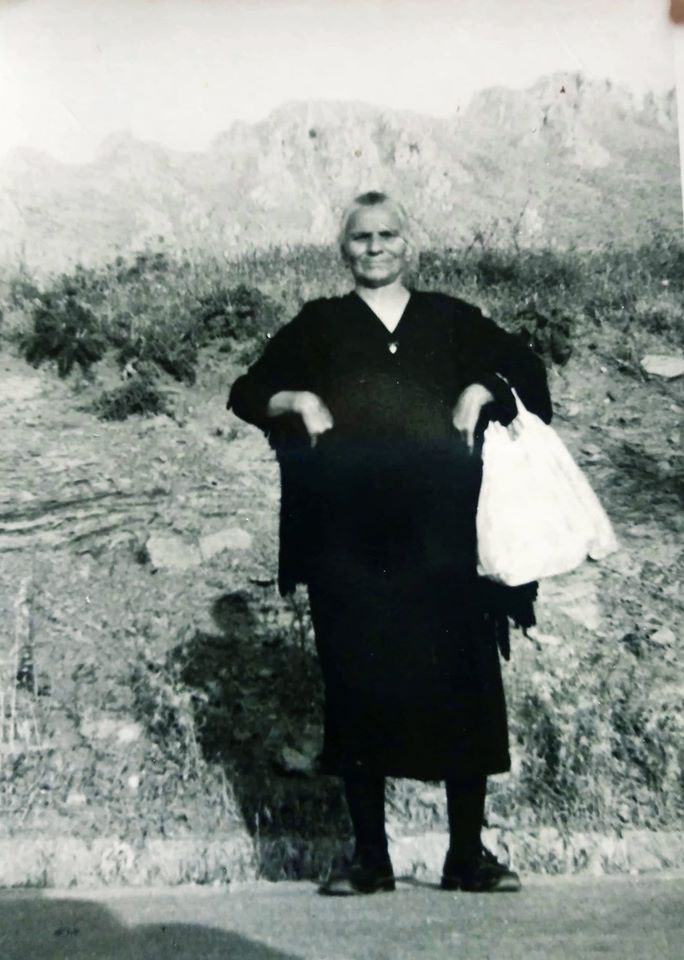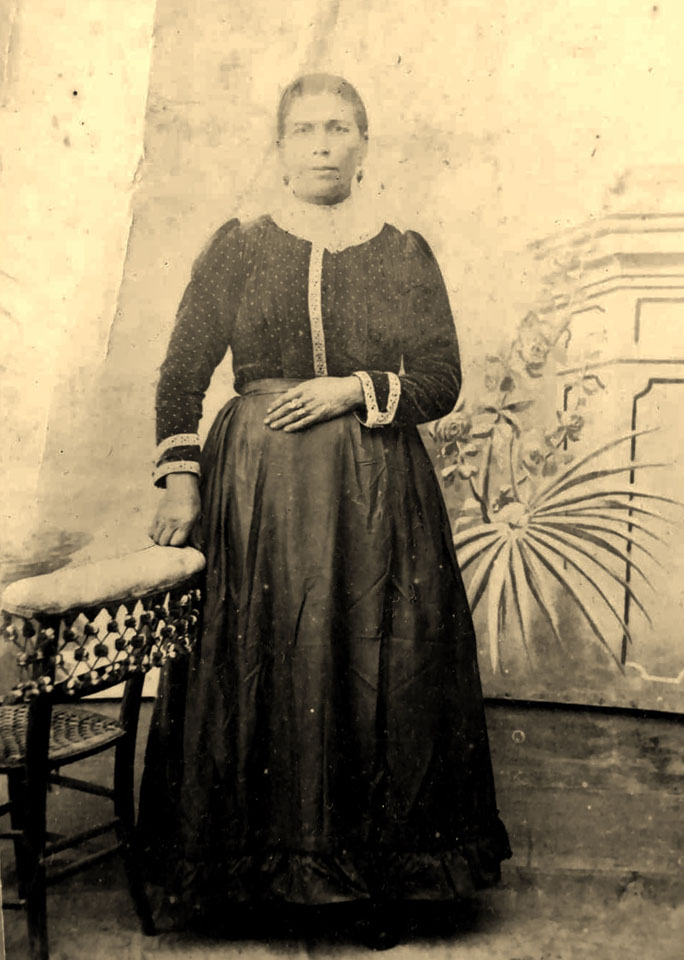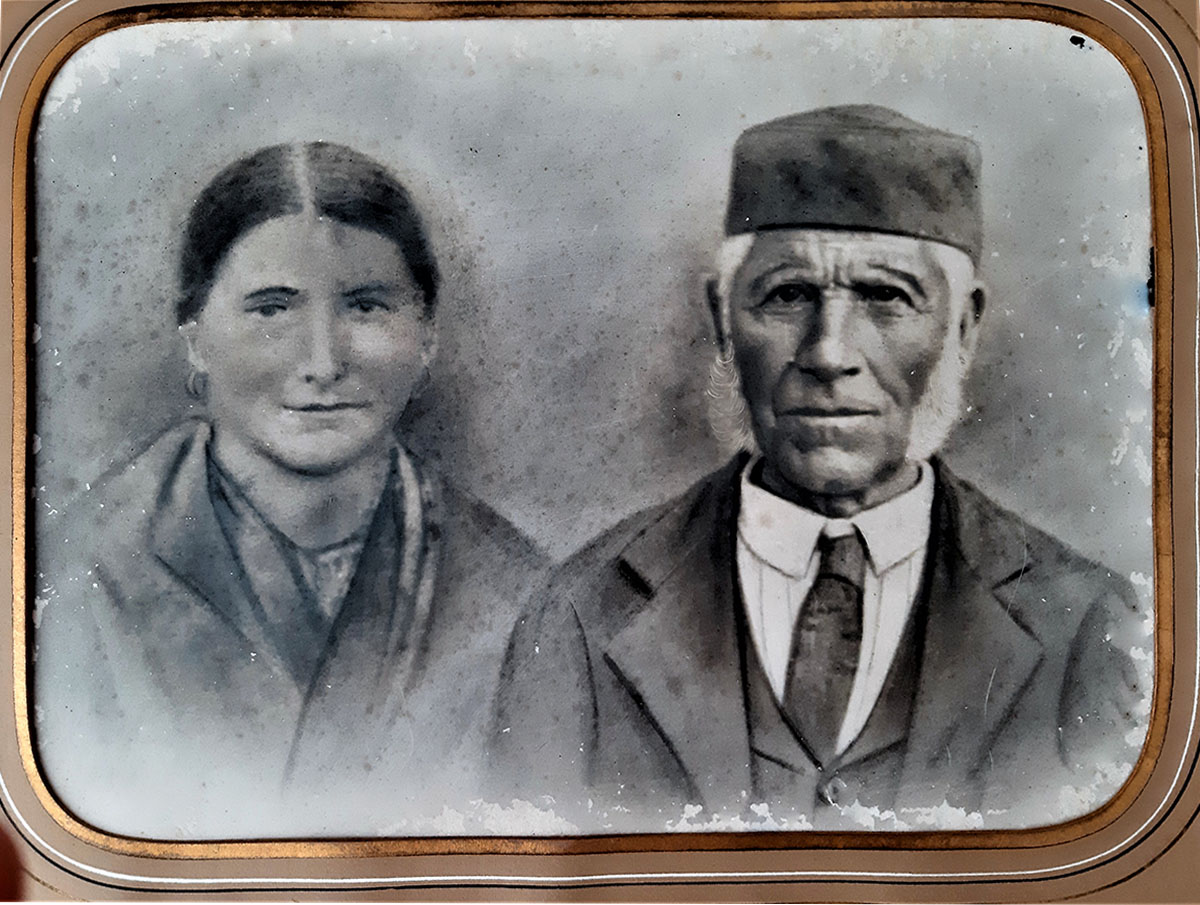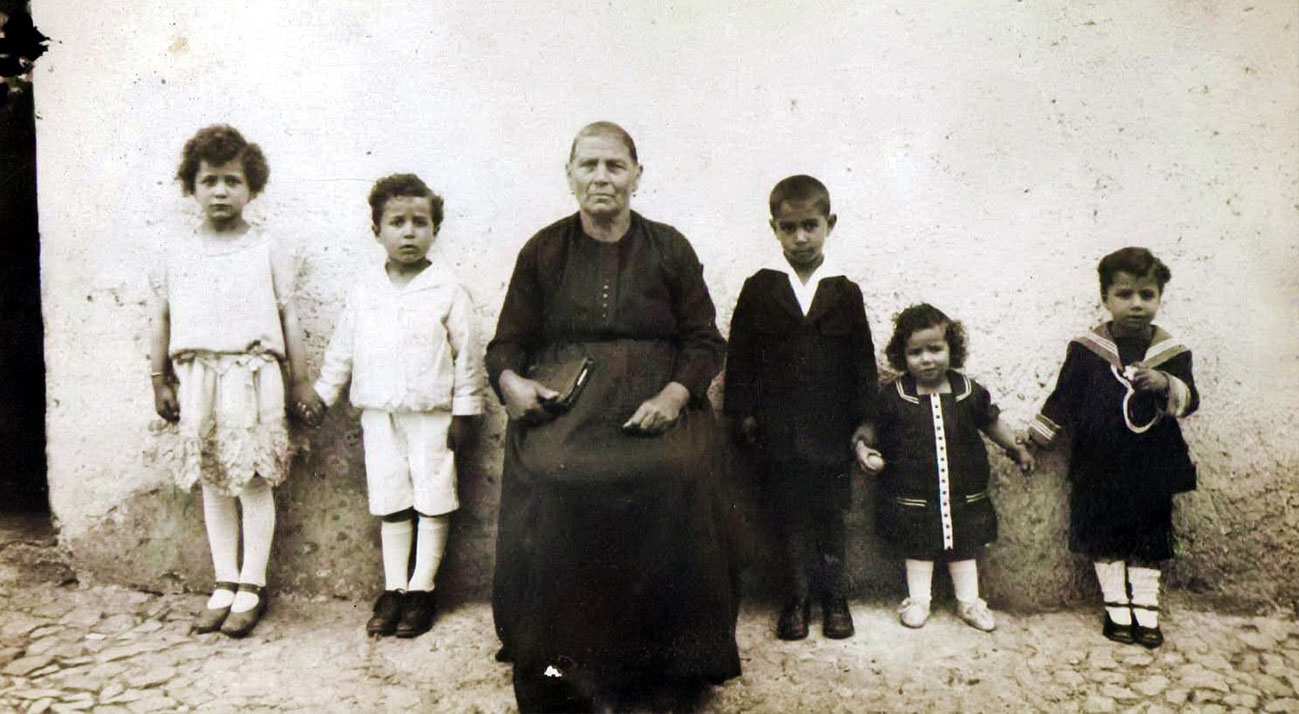Your basket is currently empty!
U Ciarmu: apotropaic rites and healing formulas of the people of Gratteri
Sicilian culture is characterised by great religiosity, which is manifested in worship, popular religious festivals and prayers. Alongside this, within the family, there are magical practices infused with superstition, sometimes incomprehensible, with the aim of exorcising evil or healing ailments. In most cases, the various averts and magical practices used were accompanied by the evocation of names and symbols of the Christian universe, a short prayer.
In the past, the people of Gratteri often used special apotropaic rites and healing formulas that were passed down from generation to generation. Some of the wisest people knew, for example, the practice of “scanto” – a ritual to be performed to free a ‘frightened’ person – which had to be repeated for three consecutive evenings or in a single sitting if it was performed on a Friday.
Sometimes, even in the absence of the person concerned, using a photograph of him or her. In the village, ‘u zzu Cicciu (“uncle Cicciu” alias Francesco Agostaro, born in 1886) and ‘u zzu Jacuddu (“uncle Jacuddu” alias Giacomo Ilardo, born in 1913) were well known and respected for having this gift.
By placing their hand on the frightened woman’s chest – in the area known as ‘a vucca di l’arma‘, considered to be the threshold between the soul and the body – they would fall into a state of apparent trance for the duration of the ritual. The anthropologist Guggino, who has been studying Sicilian magical-religious imagery for years, observes: ‘the result of a scanto can also be the incorporation of a being, i.e. a soul wandering through the air and casually passing by, while, because of a scare, the individual jumps and opens his mouth, inspiring with the air even some being “passing by” […].
There are various occasions of fright, especially for a child: a dog, usually black, barking and threatening to attack; a cat, a lizard, a mouse, suddenly appearing in sight or perceived in the dark; a scene of violence, a frightening story, a traffic accident, any unexpected, violent noise, such as the slamming of a door, fireworks, a sudden loud call from the mother.
But also her reproaches, her threats, her beatings, her delays, her neglect, which cause a state of stress in the child […]. Due to a scantu the balance of the organism breaks down, the nervous system being first of all compromised’ (GUGGINO ELSA, op. cit., pp. 20-21).
As in the rest of Sicily, the ciarmavermi were used in Gratteri. They were considered by the community, and they considered themselves to be, empirical doctors, whose knowledge was based on experience and ancient wisdom handed down by tradition, or on virtues possessed from birth or ritually acquired.
The ritual they observed included a gestural and a verbal part: they would draw crosses on the abdomen of the person concerned and, spitting three times on them, they would recite a prayer, u ciarmu, sometimes even using a necklace with seven cloves of garlic, because ‘l’agliu ammazza i viermi’ (Lucia Cirincione, born in 1923, interview 2015).
As Guggino goes on to explain: ‘people resort to ciarmavermi for accidents, illnesses or ailments of a natural or supposedly natural order: worms, ‘a matrazza’, a sprain, mumps, stomach or headaches, otitis, breast engorgement, sunstroke, jaundice, skin irritation, furunculosis, and so on. Most of these illnesses are considered to be the result of sudden fear (scantu). […]
The name ciarmavermi indicates two things: that the efficacy of their therapy depends above all on the recitation of an incantatory formula, carmen, in Sicilian ciermu, scunciuru; that the illness for which people most frequently rely on their care is caused by worms, in medical terms corresponding to oxyuriasis, a form of intestinal parasitosis due to the presence in the intestines of pinworms, tiny white worms (Ibidem).
In any case, some women in Gratteri knew several prayers to be used for healing worms, but, in most cases, the ciarmu of the scanto had to remain secret and could only be passed on to a trusted person of the opposite sex
Oration for worms
San Pantaleu, San Pantaliuni / Vui siti lu medicu di nostru Signuri / San Cosma e Dumianu / passatici la vostra manu / e la manu di la Vergini Maria / tuttu lu mali se ne vada via.
Taglia unu / taglia u viermi di lu culu / Taglia dui, taglia tri, tagla quattru, taglia cincu / taglia u viermi di lu cintu / Taglia sei, taglia sietti / taglia u viermi filietti / Taglia ottu / taglia u viermi di lu corpu / Taglia novi / taglia u viermi di lu cori
Luni é Santu / Marti é Santu / Miercuri é Santu / Juovi é Santu / Vienniri é Santu / Sabutu é Santu / e la Duminica di Pasqua / e lu viermi nterra casca / e la Pasqua e lu Pascuni / e abbutta lu virmuni / casca lu vermi a facci abbuccuni.
(Lucia Cirincione, interview 2007)


Oration to be recited during worming practice
San Pantaleu, San Pantaliuni
Vui siti lu medicu di nostru Signuri
San Cosma e Dumianu passatici la vostra manu
e la manu di la Vergini Maria
tuttu lu mali se ne vada via.
Taglia unu,
taglia u viermi di lu culu
Taglia dui, taglia tri, tagla quattru, taglia cincu
taglia u viermi di lu cintu
Taglia sei, taglia sietti
taglia u viermi filietti
Taglia ottu
taglia u viermi di lu corpu
Taglia novi
taglia u viermi di lu cori
Luni é Santu, Marti é Santu,Miercuri é Santu
Juovi é Santu,Vienniri é Santu, Sabutu é Santu
e la Duminica di Pasqua
e lu viermi nterra casca
e la Pasqua e lu Pascuni
e abbutta lu virmuni
casca lu vermi a facci abbuccuni.
(Lucia Cirincione, born in 1923, interview 2007)
Oration for worms and scanto
San Pietru e San Ciuvanni,
pi lu mari javunu,
cci ‘ncuntrò ‘u Patri Maistru e cci dissi:
“Chi hai Pietru?”
”M’incuntrò ‘n’armalu,
pizzichienti, muzzichienti,
chi mi vulieva muzzicari.”
“E tu Pietru picchì ‘un lu tagliavi?”
“Ieu chistu, Patri Maistru ‘un lu sapieva,
uora ca lu sacciu,
taglia ‘stu vermi e ‘stu scantu d’ogni cantu.
In nomu di Diu e di Maria lu mali pi ‘sti nomi cacciatulu via!
(Antonina Lazzara, born in 1922, interview 2007)
As the anthropologist Guggino argues, as important as the gestures and material remedies are, it is the recitation of the omen, the incantatory formula, that gives efficacy to the rite (cf. Guggino 2006, p. 27). Through the domination of the days of Holy Week, the period of the Passion, Death and Resurrection of Christ is recalled.
By ritually reciting the historìola, the mythical event is re-actualised, exactly as it happens during the Mass: just as Christ once died and rose again, so the faithful who participate in the rite of the Mass from the Gospel to Communion, dead because of sin, rise to new life purifying themselves in it. It is the same in the therapy for worms: the patient who died because of the disease will be cured of it by rising to new life (Ibidem).
Among other magical-religious practices identified in Gratteri, there were also those to ward off the evil eye, ‘l’ucchiatura‘, felt by excessive sleepiness and fatigue caused, often, according to popular suggestion, by a curse originated by someone who had observed that person with envy or with too much scruple (Giuseppa Lanza, born in 1922, interview 2016).
For this reason, old women were used to draw crosses on the forehead of the sick person with their tongues, chanting the following entreaty three times: “Quattru uocchi e quattru pisci / ‘st’ucchiatura sinni sprisci” (Lucia Cirincione, interview 2007; Antonia Di Francesca, interview 2007); or by spitting three times with force and making horns, they chanted an apotropaic formula: “corna-bicorna, capatigliu e capicorna” (Giuseppa Lanza, interview 2015).
One of the most common rituals, which involved the use of singular prayers, was the ritual for headaches caused by sunstroke, ‘u suli‘. This ritual inevitably had to be performed at sunset, when the sun had already set, although, in cases of necessity, it could be performed in the dark, with the windows firmly shut. A red cloth was placed on the head of the person concerned, and on top of it a dish filled with water on which three drops of oil were poured.
A piece of burning linen was then thrown into the cloth and covered with a glass. During this practice, the Credo was recited three times, as well as the following prayers: ‘U suli cuddò / a luna affacciò / Viva Maria e cchi la creò’ (Giuseppa Lanza, born in 1922, interview 2016). Sometimes, a similar rite was also performed for the practice of ‘ucchiatura’ in which the woman, soaking her finger in oil, would make it drip three times into the water of the dish;
there would be evil only if the oil stain became larger.

Prayer for the practice of insolation
Gesuzzu beddu mi doli la testa,
mancu l’orazioni puozzu diri.
Mittitimilla nna manuzza ‘n’testa,
chi appi tanti di chiova e di spini.
Tu ‘sti spini pi mia ‘un puoi suppurtari?
Se tu supporti pi mia ‘sti spini ‘ntesta,
l’eterna gloria di Diu t’amu a dari.
(Pater, Ave, Gloria)
(Nina Cirincione, born in 1913, interview 2007)
In any case, in the past, the people of Gratteri cured particular diseases using folk medicine and natural remedies such as the use of vegetables, roots and medicinal herbs, as appropriate, by having them ingested by the patient (garlic), placing them on his stomach (such as the prickly pear leaf to lower the body temperature) or placing them on a wound (such as piddicàra, a wild herb used for sores).
It was thought, for example, that three grains of barley ‘uoriu‘ would be enough to eliminate skin excrescences, which, after being rubbed on these pendulous fibroids, were tied to pebbles and thrown into a well with the left hand; it was said that as they rotted, these protuberances would also fall away (Giuseppa Lanza, interview 2015).
Certainly, it was not unusual to use those women known in the village to perform therapeutic massages on specific parts of the body. There was the sciogliruppu – who was able to soothe babies still in swaddling clothes who were crying because of some indigestion (Maria Santa Matassa, born in 1869) – or other wise women who were resorted to for back pain (rugnuna caduti), requesting the practice called i bicchirati (Nicoletta Tedesco, born in 1907) or for sprains and dislocations, i sfilaturi (Giovanna Di Maria, born in 1881).
In Gratteri, some of the older people still remember a za Vicienza, (Vincenza Sapienza, class of 1889), who used to treat skin inflammations (such as herpes zooster, commonly called ‘St Anthony’s fire‘) by rubbing two flint stones and letting the sparks fall on the reddened part of the body.
Sometimes, the practices were also accompanied by special prayers, such as the following: ‘La notte di Natali murcidda manciai, amara mi parsi e tri vuoti sputai…Sputannu sputannu, lu fuocu astutai‘ (Giuseppa Di Francesca and Rosaria Di Maggio, interview 2007).
At other times, superstitious popular beliefs fuelled the most imaginative ritual practices: to cure, for example, a skin allergy called ‘pitìnia‘, a special paste was prepared with flour and placed on the reddened skin of the sick person, ‘a farina di tri Nini’: three people bearing the name Antonino or Antonina had to take a handful of flour with their left hand, spit on it and pass it on to the reddened skin of the person concerned (Antonina Lazzara, born in 1922, interview 2007).
Or, to curb the gluttony of gluttons, ‘allupati‘, after preparing and putting a large loaf of bread into the oven, they would place the hungry person in front of the oven and, while the oven door (called a ‘chiuierna’) was opened, they would say the following chant three times: ‘Ammarriti lupu ca u furnu è chinu‘ (Lucia Cirincione, interview 2007).
A nursery rhyme addressed to children was also used to restore circulation to the numb limb, ‘addruvigliari lu pedi addurmisciutu‘: by drawing crosses on the foot, the following chant was sung: ‘Druvigliti pedi ca l’ancilu veni, veni cantannu e veni sunannu tutti li pedi va druvigliannu‘ (Nina Cirincione, interview 2007).
Lastly, there were also men who, with an opposite prayer, managed to make animals in labour go out of pain, ‘viesti addugliati‘. According to an old popular tradition, some of the most privileged unborn babies were made to wear special wolf leather shoes, ‘piedi di lupu‘ (wolf’s feet); it was said that these children, when they grew up, would have thaumaturgical powers; in fact, by making crosses with their feet on the belly of animals or by riding on them and making circular movements, they were able to calm them down by reciting the following prayer: ‘Sutta lu mpanatuni c’è l’Altissimu Signuri, cu lu gustu di la patruna, lu disgustu di lu patruni, faciti passari a st’armalu lu duluri‘ (Giuseppe Cirincione, interview 2015).
In Gratteri, there are many beliefs about death and the afterlife and many prayers are recited on particular days of the year. The fear of death, especially among the elderly, is always looming, especially at night and during the hours of sleep. For this reason, in the evening, the women of Gratteri, are used to pray to God, to the Saints, to the Madonna.
From various interviews, I have seen that there are many different prayers in the evening: from those recited when the front door is closed, to acts of entrustment to Jesus and the saints, to prayers of a magical-religious nature, as Mrs Lucia Cirincione suggests: with particular formulas, God is invoked to chain or bind the enemy; this short prayer is recited:
“Tri stizzi di sangu e Gesù in agonia, tri fila di capiddi di Maria, ‘ncatinati e liati a ccu vo mali a mia”.
There were also correspondingto dissolve spells:
“Tri stizzi di sangu e Gesù in agonia tri fila di capiddi di Maria, scatinati e sdilliati a ccu vo mali a mia”.
Some elderly women knew how to recite particular prayers to be reassured at the point of death. Mrs Lucia Cirincione, aged 83, used to say that she entrusted herself to Saint Bridget: ‘iò mi dicu a preghiera di Santa Prizita‘, reciting the act of entrustment to Saint Bridget for 40 consecutive days. In fact, it is believed that the Saint of the last hour, comes to visit and appears in vision to the dying man three days before death to bring him consolation: ‘chisti parti cu li sapi diri ppi quaranta jorna ‘un l’avi a lintàri e quando è ura di lu tò murìri, Prizita Santa ti veni a visitàri’.
To obtain this privilege granted by the Saint to her devotees, this cycle of forty consecutive days must not be interrupted.
In addition to these beliefs, there were others linked to the theme of death and the cycle of souls. One popular belief was that if a person died on a Friday, he or she would take another seven souls with them, or, if the deceased’s house was at an angle with another house, ‘cantuniera‘, he or she would take another fifteen souls with them; if an owl, ‘criviedda o malacucca‘, a bird of ill omen, was heard hooting in the evening, a mournful event would occur within three days. Everything, therefore, was linked to the repetition of events, or the cyclical nature of events.
In this regard, i remember a special prayer taught to me by my grandfather, Giacomo Lanza, to be recited to the dead whenever one passes the cemetery:
“O Brava genti ca di cca passati e ca ‘un pinsati pi l’armuzza mia, un jornu sariti cuomu mia”.
Adding three times the Eternal Rest in the dialect version:
“Riposu eternu datici Signuri la luci piati in tutti l’uri”.
“Santa Barbara and San Giluormu: ora pro nobis”
On the feast day of Santa Barbara Martire, 4 December, my grandmother, Nina Cirincione, used to tell me that some women used to recite to the Saint special and evocative prayers against bad weather; she herself knew some special prayers to keep away lightning, stormy storms and ward off evil forces: ‘the 12 words of truth‘.
In fact, tradition has it that the Martyr is invoked as a protector against lightning, fire and sudden death. Legend has it that Barbara was beheaded by her father Dioscoro, who personally carried out the sentence. Immediately after the killing, a thunderbolt descended from the sky and charred the cruel father (www.santiebeati.it).
In the imagination of the faithful, the Saint represents the ability to face danger with faith, courage and serenity, even when there is no way out. In the course of the year, special invocations, short prayers and litanies were recurrent, especially during adverse periods and difficulties caused by bad weather.
The women of Gratteri, in fact, on days of bad weather, began to chant endless litanies; the prayer of “Lu Verbu” is suggestive, a sort of spiritual testament to be handed down, and known in various local variations, testimony to the simple religiousness of women to entrust themselves to God for assistance and defence. Among the Saints recalled to ward off natural disasters were the names of Barbara and Jerome.
Prayers to calm the weather
Truonu truonu vattinni a rasu
supra li casi di Santu Fasu,
Santu Fasu e San Simuni
portanu ‘ncuoddu lu nostru Signuri
e la cruna vermi sia
porta ‘ncuoddu la Vergini Maria,
gavutu quantu è gavutu lu truonu di Maria
tantu è rasu lu truonu e lu lampu di mia.
Santa Barbara e San Giluormu ora pro nobis.
Lu Signuri di ‘ncielu scinniu,
cu nna stuola ‘ncruciata
nna cannila d’oru addumata,
Maria avanti ddi Cristu sinn’ju
e priava ppi nui e ppi tutta la cristianitati.
(is repeated 9 times in increments of numbers)
``The twelve words of truth`` (prayer for wind and storm)
Cu è l’unu?
Un solu Diu chi regna in eternità.
Cu sù li dui?
Li du tavuli chi purtò Mosè supra lu munti di Sinèi
Cu sù li tri?
Li tri profeti di lu munnu: Abbramu, Ggiacumu e Ggiacobbi
Cu sù li quattru?
Li quattru evangelisti di Diu: Luca, Giuvanni, Marcu e Matteu.
Cu su li cincu?
Li cincu chiai di nostru Signuri Gesù Cristu chi n’aiuta pi la via.
Cu sù li sei?
Li sei galli chi cantunu cu alleria.
Cu sù li setti?
Li setti piccati murtala.
Cu sù li ottu?
Li ottu sù l’armuzzi giusti.
Cu sù li novi?
Li novi cori di l’ancili.
Cu sù li dieci?
Li dieci cumannamenti di Diu.
Cu sù li unnici?
Li unnicimilia Vergini.
Cu sù li dudici?
Li duduci articuli di Diu.
Tridici raggi di lu suli
Tridici raggi di la luna
scatta lu Dimoniu ccu tutti li cumpagnuna!
(Maria Antonina Cirincione, born in 1913, interview 2006)
Prayer to dissolve 'i manicati' (swirls of wind or fog)
Quantu è granni lu mantu di Maria,
arriparati a mia ccu tutta la me cumpagnia.
Quantu è longa la cruna di Maria
tantu s’allarga lu truonu e lu lampu di mia
e di tutti li cristiani di lu munnu.
In nomu di Diu e di Maria
tagliti manica luntanu di mia.
(Giuseppa Lanza, born in 1922, interview 2007)
Lu Verbu
Lu Verbu sacciu e lu Verbu a diri,
lu Verbu chi criò nostru Signuri
quannu supra un trunu di cruci
ju a murìri ppi nuatri miseri e piccatura.
O piccaturi, o piccatrici
riguarda quantu è gàuta ‘sta cruci;
quantu è gàuta e quant’ è bedda
chi stienni un vrazzu ‘ncielu e nautru ‘ntierra.
A la valli a la valli di Giosefà
picciuli e granni,amu a essiri ddà,
trentatrì anni ci staremu,
cuomu la foglia tremeremu,
San Giuvanni calirà c’un libru ‘nmanu e liggirà:
“Patri Signuri cuomu pirdunastuvu li cani judei accussì aviti a pirdunari l’amici mei”.
“Giuvanni nun li pozzu pirdunari
travagliunu pi li festi principali,
la Matri Santa mi faceva ‘nzinga,
lu Verbu c’‘un lu sapi si lu ‘nsigna.
Cu lu dici tri voti a lu jornu ‘un avi paura di peni e d’Infernu
Cu lu dici tri voti a la notti ‘un avi paura di la mala morti
Cu lu dici tri voti a la via ‘un avi paura di la morti ria
Cu lu dici tri voti o capizzu ‘un avi paura di trimulizzu
Cu lu dici tri voti ogni tantu ‘un avi paura di truonu e lampu
Cu lu sienti e nun lu cumprienni sietti virgati di focu eternu
Cu nun lu sapi si lu nsignirà ca peni d’infernu nun li patirà
Cu lu sapi e nun lu dici setti finati di fuocu e di pici.
(Giacomina Gussio and Rosa Chichi, interview 2007)
Lu Verbu
Lu Verbu sacciu e lu Verbu vuogliu diri,
lu Verbu chi lassò nostru Signuri
quannu la cruci pi nui muriri
pi nuatri miserabili piccatura.
O piccaturi, o piccatrici
riguarda chi gàuta e bedda
chi duna un ‘vrazzu ‘ncielu e nautru ‘ntierra.
Chi bedda Mà chi bedda verrà
tutti quanti n’aunciemu ddà,
picciuli, giusti, ranni e piccaturi
e quannu l’armiciedda tremerà cchiù chi fogli di campìa
San Giuvanni a lu cantu ci stacìa
cun librettu ‘nmanu chi leva lu Signuri,
lu Santu Sarvaturi
li morti n’hannu a finìri ca lu ‘nimicu ‘n’havi a sintìri,
la Matri Santa rispunni e dici
cu sapi lu Verbu cci lu dici.
Cu lu sapi di ccà e di ddà setti pricàti fuocu avrà
Cu ‘un lu sapi e nun si lu ‘nsigna setti pricàti fuocu ‘ntra lingua
Né uccisi mancu ‘mpisi mancu uomini esteri affisi
aiutati cuomu a chiddi Patri Santi chi foru milli e tanti
e Vui donna Signuri aviti
facitini ‘sta santa caritati.
(Carmela Ventimiglia, interview 2007)
Marco Fragale
(Università di Palermo)
Bibliografia:
D’ANGELO GINA, Fiori di campo, Palermo, 2001
FRAGALE MARCO, Il ciclo dell’anno a Gratteri. Aspetti devozionali e significato antropologico – Tesi di laurea in Lettere Moderne, a.a. 2006/2007
GANCI BATTAGLIA GIUSEPPE, Streghe, stregoni e stregonerie di Sicilia, Organizz. Ed. David Malato, Palermo, 1972
GUASTELLA AMABILE SERAFINO, Canti popolari del circondario di Modica, Lutri e Secagno figli, Modica, 1876
GUGGINO ELSA, Fate, sibille e altre strane donne, Sellerio, Palermo 2006.
HENNINGESEN G., Le donne di fuori: Un modello arcaico del sabba, in Archivio Antropologico Mediterraneo, anno I, 1998.
MANNELLA PIER LUIGI JOSE’, Trizzi di donna, tra etnopatia e virtù, in Etnografie del contemporaneo ANNO 1 n. 2, 2019 – Associazione per la conservazione delle tradizioni popolari – Museo internazionale delle marionette “A. Pasqualino”, Palermo.
SALOMONE MARINO SALVATORE, Spigolature storiche siciliane dal sec. XV al sec. XIX, in “Nuove Effemeridi Siciliane” III, XII, pp. 302-311
PITRE’ GIUSEPPE, Costumi, credenze e pregiudizi del popolo siciliano, Vol. 4, Palermo 1889
PITRE’ GIUSEPPE, Medicina popolare siciliana, Clausen, Torino-Palermo, 1896



